The Best Patio Material: Why a Natural Stone Patio is the Perfect Choice for Your Home
Limestone
Limestone is quite popular among the royals. It is one of the most abundant sedimentary rocks available in all the states of North America. Dating back to the Ordovician Period approximately 450 million years ago, it is one of the oldest options we mentioned.Its ancient origins have led to extensive quarrying and diverse applications throughout history. Limestone finds its place in architecture, kitchens, and water filtration systems. It showcases its versatility and durability across various domains.
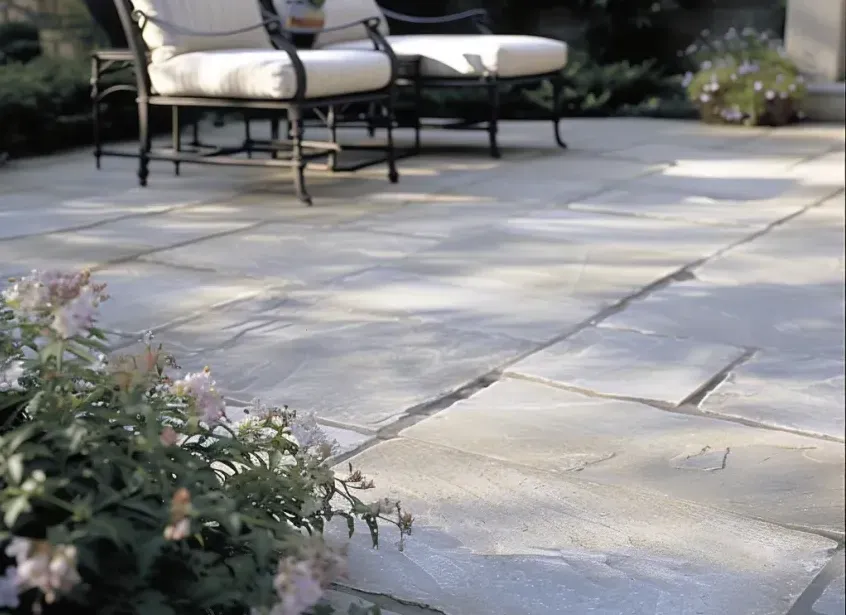
Create a
natural stone
patio if you want balance, beauty, function, durability, and value in your outdoor living space. Whether you need a tropical vibe with light beige Sandstone or a majestic feel with dark ebony granite, natural stone offers all the options to match your preferences.
The primary benefit of using natural stone for your patio is its easy maintenance and durability compared to concrete. It won't get affected by stains and doesn't fade over time. Natural stone materials are a resilient and eco-friendly option for your outdoor space.
Two Factors to Consider Before Selecting The Natural Stone
Before we dive into the different types of natural stones, let's understand two important factors for the process:Determine Your Budget: First, you need to decide your project budget and then explore the options. Understanding your financial constraints can assist in narrowing down your options, as the cost of natural stones can vary significantly.
Minnesota Climate: Consider the local climate and the specific installation site for the natural stone tiles. You need to select a natural stone that can tolerate the temperature fluctuations. Different stones vary in durability and weather resistance.
Limestone
is the best natural stone suitable for your modern-day patio. However, you must ensure its authenticity. Genuine limestone typically consists of approximately 95% limestone and around 5% additives, such as water, iron oxides, and magnesium oxide.
Experts usually add minerals like silica, sand, and clay to enhance its strength during construction. However, when using patio stone, additives like silica may make it more prone to cracking and breaking. So make sure you tell the constructor to avoid such extra additions to limestone and use it in the purest form.
Flagstone
Flagstone is a superior alternative to bluestone, or some may refer to it as irregular bluestone. It exhibits colors ranging from light brown and red to dark gray. When you polish it to a matte finish, it can also showcase a natural blue-gray shade. This natural stone is composed of various rocks, including sedimentary and Sandstone.It is renowned for its durability and ability to withstand high pressure. Flagstone is quite reliable when it comes to outdoor patios, as compared to other stones. Its irregular shape allows for versatile designs, accommodating squares, rectangles, or any desired shape.

Plus, flagstone installation is straightforward due to its adaptability. Once your patio is constructed with flagstone, you need minimal maintenance. It can endure heat, moisture, and regular use without significant upkeep costs.
Marble
As we know, Marble is a timeless natural stone that has been used for centuries. It continues to captivate us with its beauty even today. It stands as one of the rarest natural stones across the globe. Why? The United States has only 1% of the world's supply of this precious stone. Despite its rarity and expense, Marble may surprise you as it is a metamorphic rock .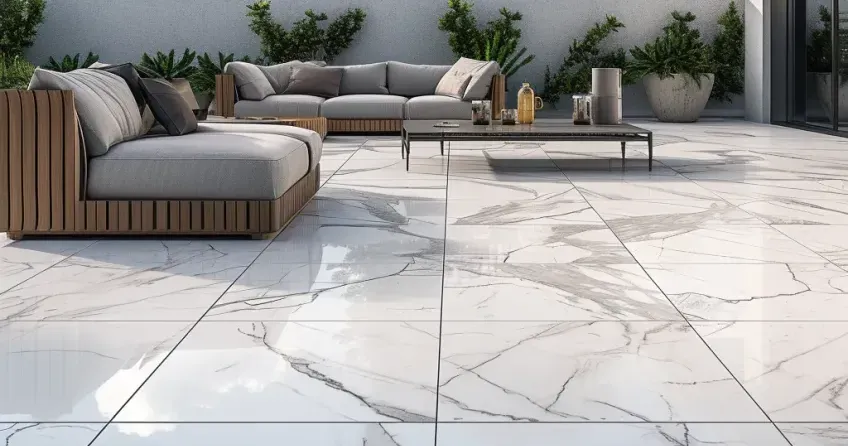
It is quite similar to limestone but differs in texture. Marble is formed through the gradual transformation of calcium-rich minerals over several years. Since this stone is soft and porous, it may require an extra thick top coat and regular sealant applications.
Plus, you need to safeguard it against stains and water damage. The high maintenance demands of Marble may result in higher installation and upkeep costs compared to a premium granite surface. That is why you will see marble patios around Beverly Hills.
Granite
Granite boasts durability and heat resistance! These two qualities make it suitable for indoor and outdoor applications. It will give your outdoor space a cohesive aesthetic. Granite is available in various shapes, sizes, and colors.Plus, you can customize granite with different textures. Its low-maintenance nature and eco-friendliness add to its appeal. However, granite's inherent porosity requires sealing to prevent potential staining and moisture damage.
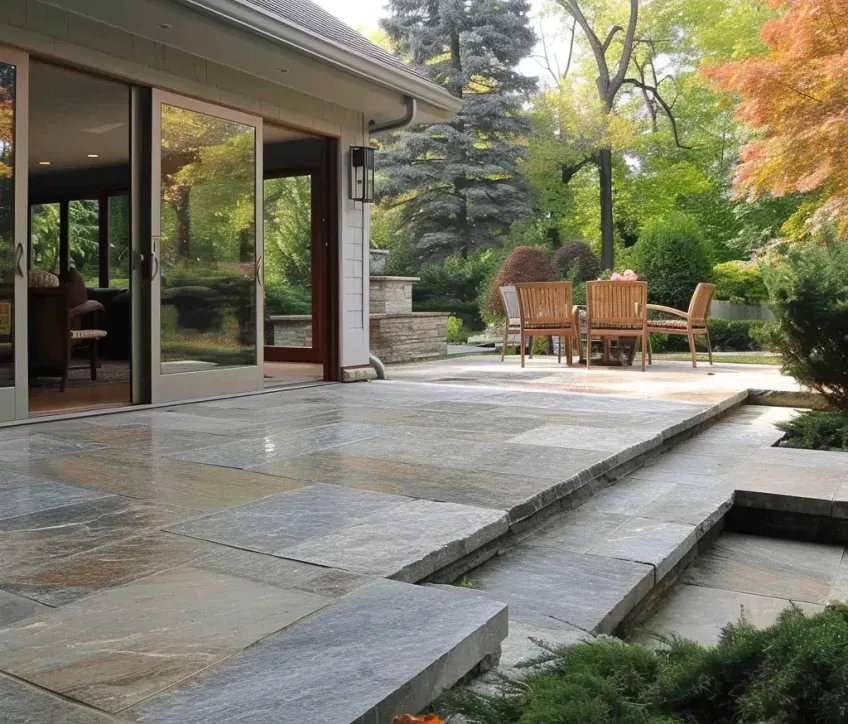
It stands out as one of the most exquisite and luxurious minerals used for interior and exterior decor projects. Although it is a little pricier than other stones, granite remains one of the most durable options available.
Its exceptional resistance to heat and ability to withstand heavy foot traffic makes it a preferred choice. Moreover, its attractive texture becomes an ideal solution for patio areas in temperate regions.
Its exceptional resistance to heat and ability to withstand heavy foot traffic makes it a preferred choice. Moreover, its attractive texture becomes an ideal solution for patio areas in temperate regions.
Slate
Slate is one of the strongest and most resilient materials for outdoor patio floors. While designers commonly use it as a decorative roofing material for roofs and walkways, slate is an excellent choice for patio stones.It is formed through the rapid cooling of molten rock forced up through sedimentary layers. Slate can also transform into a metamorphic rock. Due to its scarcity in nature, people need to mine the slate for a long time.
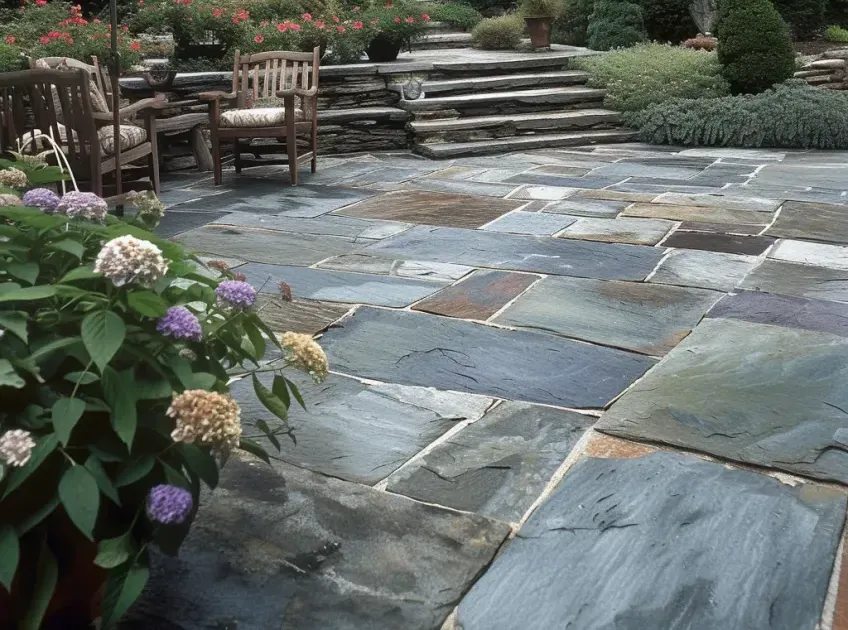
Slate boasts exceptional hardness and is capable of tolerating heavy foot traffic. Nonetheless, it requires a thicker top coat compared to various other patio stones. With its remarkable resistance to water and stains, slate emerges as an excellent option for patios exposed to frequent rain or humidity.
Bluestone
Bluestone is the hidden aesthetic gem. It is a natural stone variety that's an excellent choice for patios. You can cut and craft it into blocks. Plus, you can customize bluestone in any size or shape according to your preference. Bluestone comes in various types, including thermal bluestone, natural cleft bluestone, bluestone stair treads, and cut bluestone.While the name " bluestone " might suggest a blue color, it doesn't always indicate a specific shade. Bluestones come in various colors: blue, blue-gray, brown, gray, orange, purple, yellow, rust, and green. It all depends on their origin.
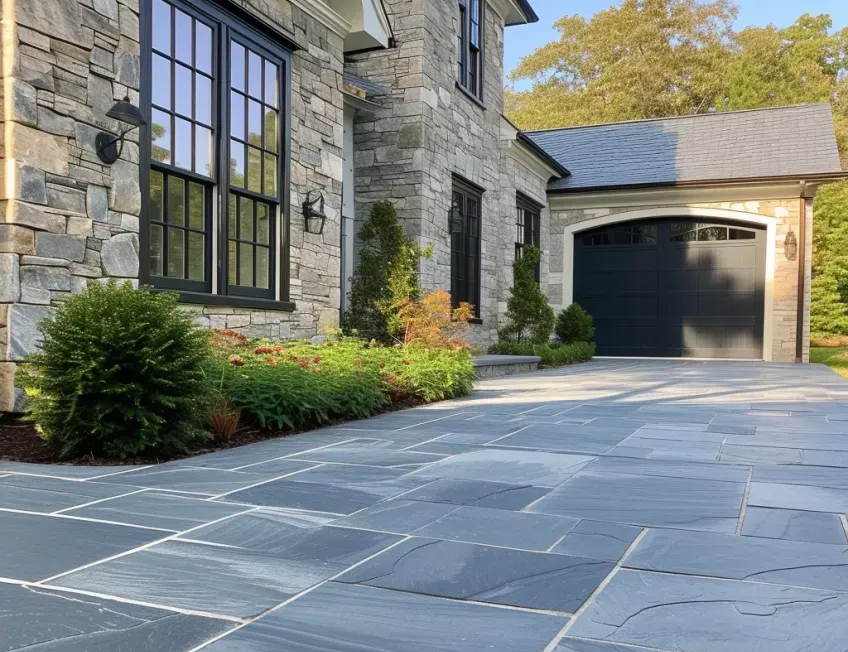
Despite the diverse color range, bluestones boast a stunning appearance that lends elegance and eclecticism to any patio. Their durability and resistance to freeze-thaw cycles make them an excellent option for outdoor structures.
However, their porous nature causes them to retain significant amounts of water, which can ultimately detract from their natural colors and beauty.
Sandstone
Sandstone may look aesthetically pleasing, but it's soft and porous compared to other stones. Its susceptibility to damage from foot traffic and severe weather makes it less suitable for outdoor applications. Instead, you can use it as a decorative stone for patio walls.Due to its soft nature, Sandstone requires a thick top coat. You need to reapply it annually for adequate protection. Without regular maintenance, it may show signs of wear and tear.
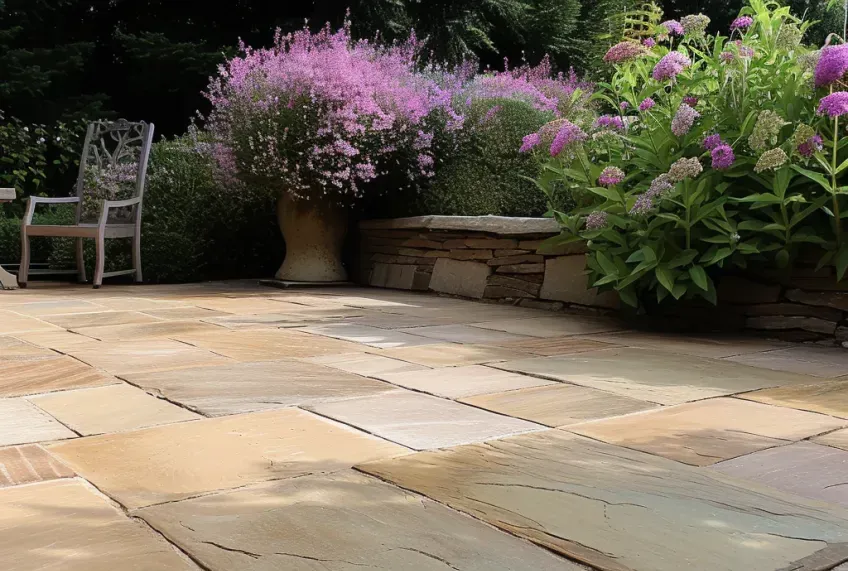
However, Sandstone still remains a favored option for designers and homeowners because it brings a rustic, natural charm to your outdoor area.
Invest In The Best Natural Stones For Your Patio
investing in natural stones for your patio offers a timeless and durable solution that enhances the beauty and functionality of your outdoor space.The versatility of natural stones provides endless design possibilities, ensuring a unique and customized look for your patio. Additionally, the low maintenance requirements and long-term durability make natural stones a practical choice for homeowners seeking to add value to their property.
By choosing the best natural stones for your patio, you can create a welcoming and inviting outdoor area that will be enjoyed for years to come. Take the first step towards transforming your patio by contacting us today to explore the wide range of natural stone options available and investing in the perfect choice for your home.










